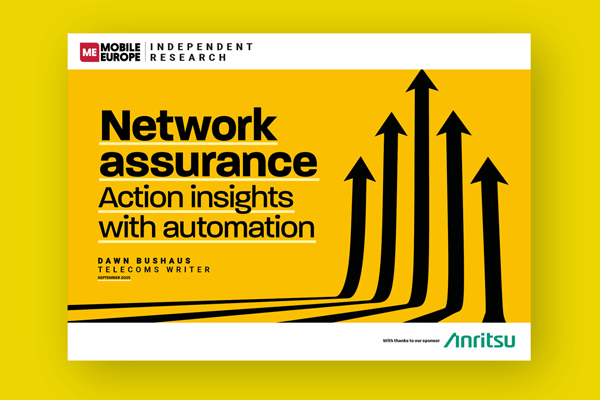As O-RAN trials ramp up, operators ready and test their networks
Open-RAN (O-RAN) offers multiple benefits, including lower costs and a network performance boost. O-RAN will also enable the ultra-reliable low-latency communications needed by many 5G applications, so it’s no surprise that operator trials are ramping up.
Vodafone is launching a commercial pilot of 5G Open RAN in two rural areas in Germany, starting in early 2023. The mobile operator is also set to launch a “golden cluster” of O-RAN sites in Devon in the UK.
At the same time, Telefónica is working on an 800-site pilot across Spain, Germany, the UK and Brazil. Meanwhile, Deutsche Telekom has switched on an entire “O-RAN town” in Germany.
O-RAN also has the backing of the UK government, which this year announced industry guidelines to help roll out the technology quickly and attract new telecoms vendors to the 5G supply chain.
Momentum is certainly growing, but there are still multiple challenges to overcome as operators’ ready and test their networks. According to a report by Analysys Mason, operators are concerned about the potential for increased costs that will not be outweighed by a more competitive supply chain.
Many operators have questions around ease of integration and cost, says Richard Webb, Director of Network Infrastructure at CCS Insight. “How easy is it to deploy O-RAN solutions that combine elements from multiple vendors? Yes, there are O-RAN standards, but that does not necessarily mean integrating different parts of a solution is as straightforward as plug-and-play.”
In addition he asks: “Will an O-RAN solution be more cost-effective than an end-to-end RAN solution from a single vendor – or at least comparable?”
O-RAN challenges
There are also concerns about how to get the most value from the technology. Even when O-RAN is deployed, understanding how to open up the value of app-based RAN functionality remains a new exploration for operators, says Webb.
Other issues include immature standards and solutions; migration and coexistence with legacy architectures; inability of smaller vendors to support large-scale deployments; and performance trade-offs in heavily loaded networks – especially those with Massive MIMO, says Analysys Mason Research Director, Caroline Gabriel.
In addition, while trials in Europe are driving the Open RAN ecosystem, these are “well behind” parts of Asia including Japan, India and North America, Gabriel points out.
Another challenge centres around the fact that Open RAN is not a plug-and-play technology, says Viplob Syngal, Head of Business Development – Global Open RAN Centre of Excellence, NEC Europe. “Some operators expect to take any product from any vendor, interface it with another product from a different vendor, and want it to work out of the box at the same level of performance and stability. But the reality of our industry is, this does not happen today – even for non-Open RAN products.”
Accelerating O-RAN progress
It’s true that O-RAN trials are gaining pace, but common testing and integration processes will be important to accelerate progress, says Gabriel. She cites the need for robust standards in all the O-RAN interfaces, but concedes, “these are still a work in progress”.
Currently, says Gabriel, most near-commercial trials are focused on open fronthaul alone and many are single-vendor in the first phase. However, she points out, a few operators – such as NTT Docomo, AT&T, Vodafone, Reliance Jio and TIM – will have macro networks ready to deploy by 2024.
Yet progress will not continue unless operators take a “leap of faith” and look to deploy O-RAN more widely, says Paul Rhodes, Open RAN and 5G Lead, GSP International, at World Wide Technology. “The true test of O-RAN’s progress will come during roll out across countryside locations through private networks and metro cells, where high performance solutions will be field proven.”
This requires investment – which is “essential” in order for O-RAN to continue to develop, says Maria Lema, Co-Founder of Weaver Labs. “The current deployment model is still under-investing into Open-RAN, which is failing to encourage competition.”
Collaboration is Key
Going forward, industry collaboration is key across the entire ecosystem. This will help to address integration and interoperability challenges, Lema says. “We’re still far from where we want to be when it comes to open and interchangeable networks, because the traditional model is still very much present.
“There’s no possibility to evolve in higher layers because the technology is still facing a lot of integration problems. Standards must play a stronger role, and for that we need the industry to work together.”
Paul Miller, CTO at Wind River agrees. “Some may argue that Open RAN potentially increases the possible integration cost efforts. Fundamentally, success in integration is enabled by strong ecosystem partnerships between the vendors offering solutions to the carriers.”
Lema says telecoms operators, network equipment vendors and systems integrators must now work together to further develop and test true Open-RAN in realistic settings. They should do so via a truly diverse supply chain, she adds. “One single Vendor Open-RAN network cannot be considered as a viable test case, since this doesn’t address interchangeability.”
Operators are aware of O-RAN’s potential but they are also conscious of the multiple challenges they face. It might sound obvious, but time is needed to allow projects to grow and develop.
The next stage is for the industry, especially via groups such as the Telecom Infra Project, to accelerate work on a “deployable and affordable architecture”, says Gabriel. “This will enable larger deployments and add scale and confidence, but all these milestones are complex and require two or three years of close cooperation.”
Over the next few years, Webb expects most operators to apply a phased approach to the technology: “Roll out O-RAN over a modest proportion of base station sites, see how that goes and then expand to more. Operators are more likely to experiment with new vendors and innovative architectures in underserved areas, where the pressure for high performance is lower.”




